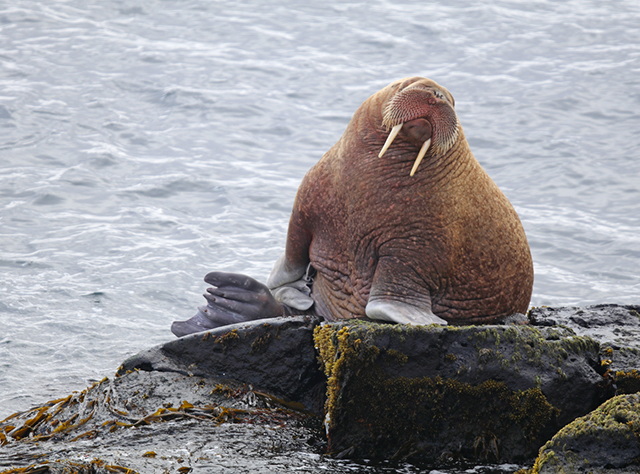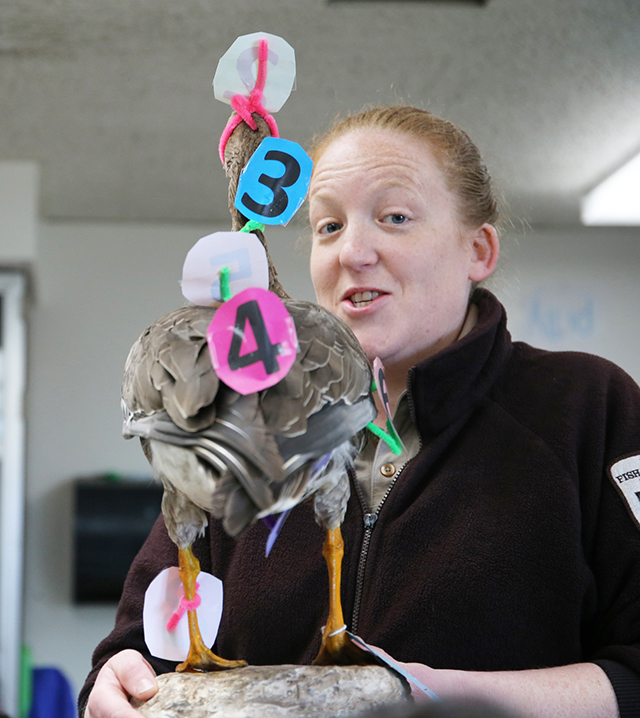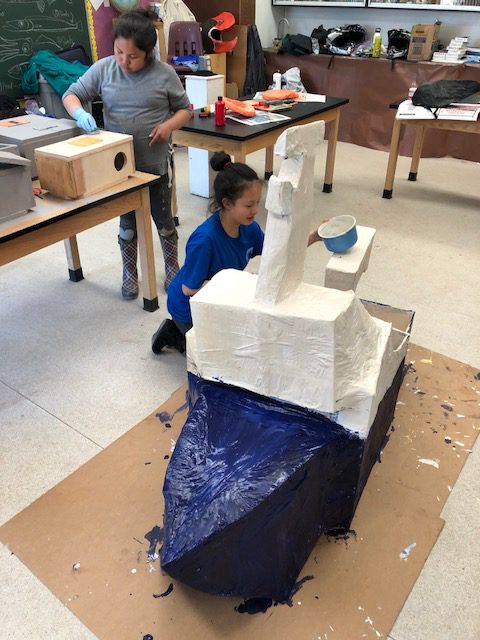
We changed plans for the start of camp to go see a very rare visitor. All the campers slowly and quietly crawled to the edge of the cliff so see an incredible sight. A walrus hasn’t been seen at St. Paul Island in 13 years.
After returning from seeing the walrus, which was a first for most students, our older students worked on an egg shape experiment. The basic question was: Why are murre eggs shaped the way they are? We watched a video by Dr. Tim Birkhead (resource links below) to get some background information, and then the students used some chicken eggs and a few murre eggs donated by Jacob and Heidi to experiment with. They rolled the chicken eggs as if they were leaving the feet of a murre and measured the arc by roughly tracing the resulting arc on graph paper. The students then repeated the same test with the murre eggs and figured out that the arc was not much smaller. This prompted the students to say that the murre ledges we see here on St. Paul are often smaller than that arc!


The students then wanted to measure the amount of weight an egg could hold. This idea came from knowing through observation that often not just one bird puts pressure on the egg, sometimes you can see other murres landing on top of a bird with an egg or fighting on the ledges that may cause more pressure to be applied to the egg. This was a fun but crude experiment as we first used the chicken eggs (some blunt ended and some pointy) under a cookie sheet with weight lifting ‘dumbells’ to simulate bird weight on the eggs. The chicken eggs both cracked at 5 pounds weight applied, but the (hollow) murre egg was able to take 9 pounds! We did end up cracking one of the murre egg shells, so by looking at the thickness of the cracked shell, we saw that the murre egg shell is thicker than the chicken egg shell.
Students brainstormed other experiments and ways to make these two more exact. They just need to get to this year’s murre harvested eggs and use them for science experiments before our elders cook and eat them!

The younger kids learned about seabird body parts and behavior. YCC crew member Maxim presented on bird body parts and we followed up with two games to reinforce their learning. Ram gave a presentation all about bird behavior. Birds do the funniest things!
We decided to further adjust the schedule due to weather: It was gorgeous out! We shifted Thursday’s field trips to today and enjoyed the sunshine.
The fox team got preliminary results from their experiments: as hypnotized, the “town” fox more readily ate “human” foods. It ate pizza, chips, and jalapenos. The out of town fox only ate the pizza. And who can blame him.


The second group of older kids had a great time on High Bluffs studying biodiversity.
The younger kids had a field trip studying bird behavior. That used their bird behavior bingo cards to check off all of the behaviors that they observed on the outing. They visited Weather Service Lake and Ridgewall and saw different behaviors at these contrasting locations.
We ended the session by making play dough plankton sculptures. Strangely, many of the “plankton” turned out looking a lot like walruses.


Evening session featured a prop-building and painting workshop. The last of the assembled auklet boxes also got a coat of stain.
Resources:
https://www.youtube.com/watch?v=eXXG0DdNwEs
http://www.audubon.org/news/why-are-murre-eggs-so-pointy-new-research-debunks-prevailing-theory
http://onlinelibrary.wiley.com/doi/10.1111/ibi.12458/abstract
